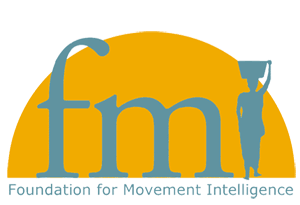
Outsmarting Osteoporosis with Movement Nature Meant
From navigating the Australian outback, to scaling the mountains in the Andes and the Himalayas, to trekking vessels of water and baskets of goods across sub-Saharan Africa, the world’s traditional cultures have evolved ways of moving to sustain life and maintain health which have served humankind for centuries, and which have much to offer our comparatively sedentary twenty-first century society.
In particular, with regard to skeletal health, it is notable that African women have the world’s lowest incidence of bone fractures. Yet we all live on the same planet and share the same gravitational field (save for astronauts, who return to earth with bone loss of as much as 2% per month). Could it be that there is wisdom in the water carrier’s walk? That by modeling their manner of moving, as nature meant, and adopting attributes of their graceful gait, we, too, can strengthen our bodies — reversing bone loss and increasing bone resiliency — while we restore our health and boost our biological optimism in the face of our culture’s current concern with osteoporosis?

This is the working premise of Bones for Life® — an experiential training in optimal human biomechanics, whose precise, practical, hands-on approach to autonomous mastery of posture and movement is being championed in the United States and Canada by our growing organization.
Bones for Life’s key concern is with safety. As an initial step in attaining and maintaining an optimal weight-bearing posture, you first learn to align your spine with its innate design, so as to protect its vulnerable joints from injury. Then, later, while intelligently “using your head” — literally — to sustain bone-building loads, you learn to walk once more as Nature intended, allowing yourself to lengthen as you strengthen, and improve as you move.
How does this help your bones? Bones are constantly remodeling; osteoclasts break down old tissue, while osteoblasts generate healthy new cells. When we learn to walk again with a dynamic spring in our step, as humankind has done for centuries, the rhythmic pulsations stimulate growth, and fortify bone tissue in accord with Wolff’s Law.
With this age-old answer to the modern malady of osteoporosis Bones for Life is achieving some remarkable results. For improved health and well-being, we invite you to safely explore integrated patterns of natural movement and weight-bearing posture embodied by indigenous people worldwide, and awaken your skeleton’s innate intelligence — both consciously and cellularly. You may discover a resilience inherent in your bones that energizes, invigorates and revitalizes your entire self!
A study of Bones for Life, presented at the 2017 Brain • Body • Cognition conference in Oxford, England,
was published in July 2018
Evidence suggests that Bones for Life increases the stability of organized single-leg stance during movement and successfully carries over into more challenging tasks that require a smaller base of support, like walking, turning, reaching, and climbing. Participation in Bones for Life classes has a positive influence on quality of life indicators like peace, happiness, calmness, and increased energy. The outcomes suggest that the Bones for Life program may be a safe, feasible, and effective way for seniors to improve function.
— Carol A. Montgomery, Cynthia M. Allen, Shereen D. Farber, Mark O. Farber
Functional Neurology, Rehabilitation, and Ergonomics
Vol 7, No 2 (2017): Summer 2017, pp. 47–61 Published Pilot Study
A 14-month bi-continental pilot study of Bones for Life, conducted in Brazil and England in 2019–20,
and summarized in 2024, included the following qualitative remarks:
Brazilian participants reported that practicing Bones for Life contributed positively to greater body awareness, relating this to factors such as better posture and improved balance. Five Brazilian volunteers reported a reduction in pain after starting regular Bones for Life practice, also citing improvements in areas such as coordination. A similar proportion reported better sleep quality. Seven reported improved energy levels, with increased well-being and emotional health. Some noted improvements in the circulatory system, breathing, the urinary tract and the digestive tract, as well as increased libido.
— Silvia Gray, Flávia de Souza, Gabriela Macetti G. Oliveira, Emerson Antonio Freitas
Bones for Life® — A Study of its Bone Health Benefits from a Fascial Perspective
A 16-page Summary of this Pilot Study’s quantitative and qualitative findings
